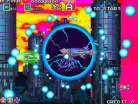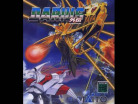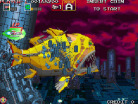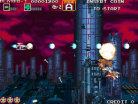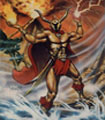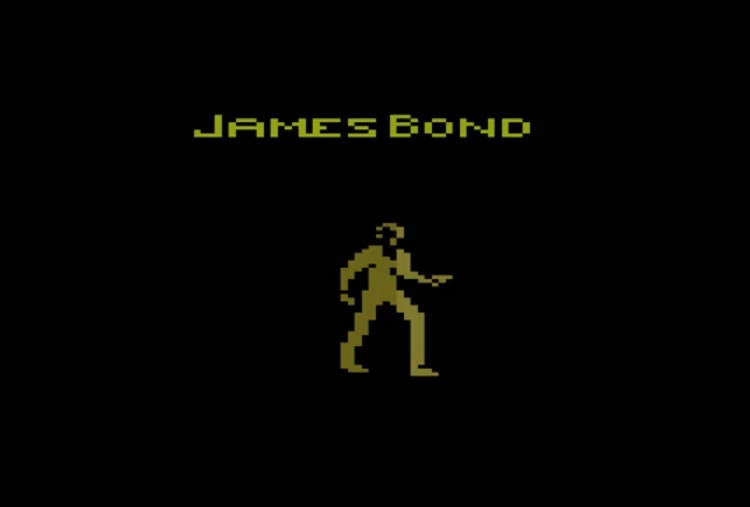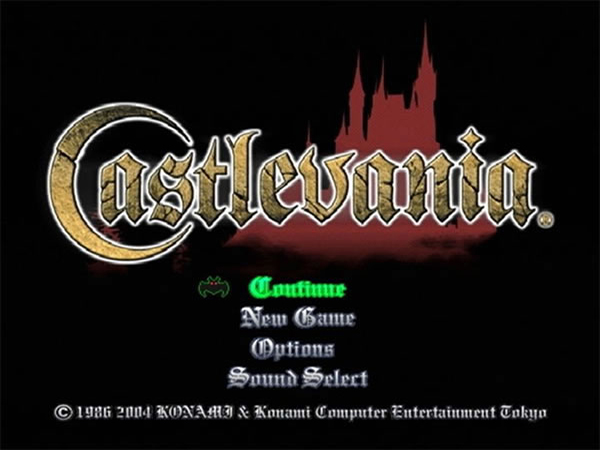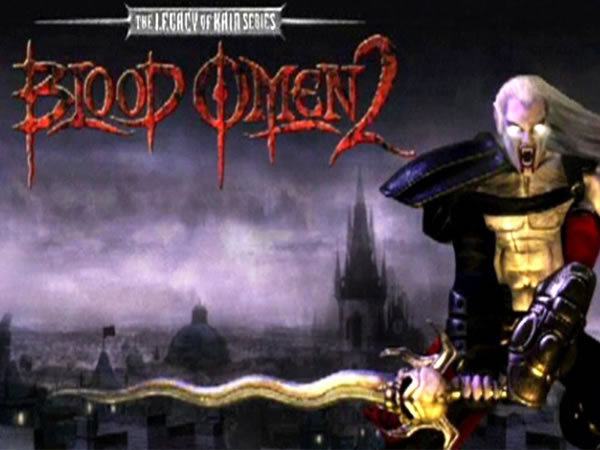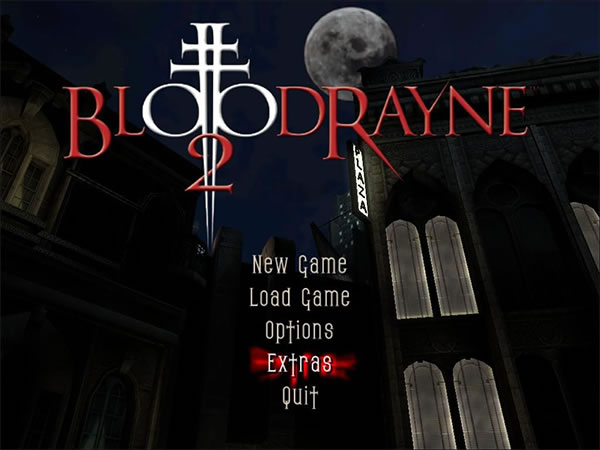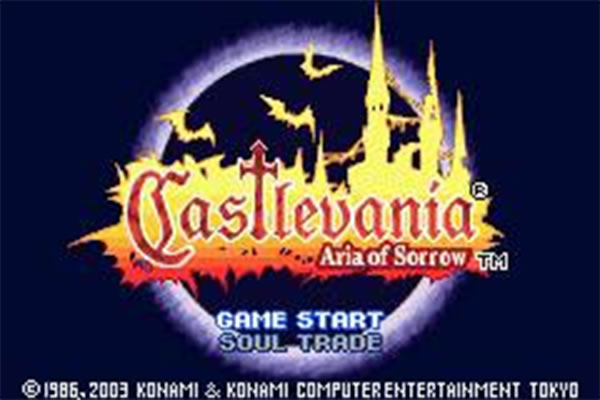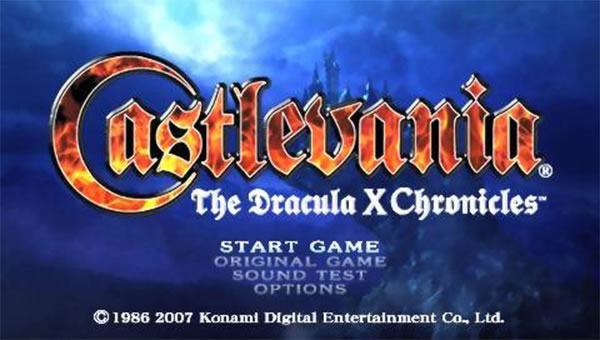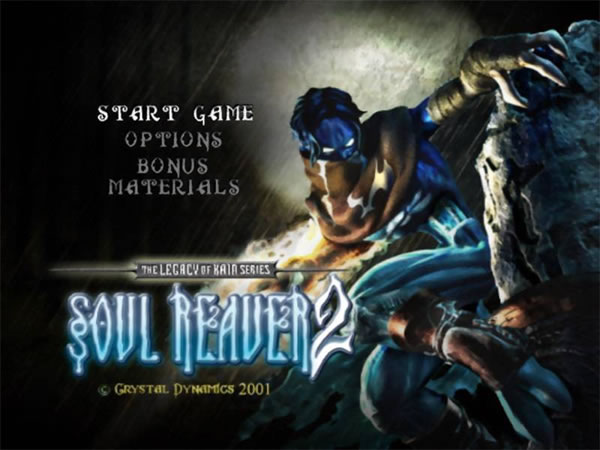- CLASSIC MAGAZINES
- REVIEW CREW
A show recapping what critics thought back
when classic games first came out! - NEXT GENERATION'S BEST & WORST
From the worst 1-star reviews to the best
5-stars can offer, this is Next Generation! - NINTENDO POWER (ARCHIVE)
Experience a variety of shows looking at the
often baffling history of Nintendo Power! - MAGAZINE RETROSPECTIVE
We're looking at the absolutely true history of
some of the most iconic game magazines ever! - SUPER PLAY'S TOP 600
The longest and most ambitious Super NES
countdown on the internet! - THEY SAID WHAT?
Debunking predictions and gossip found
in classic video game magazines! - NEXT GENERATION UNCOVERED
Cyril is back in this spin-off series, featuring the
cover critic review the art of Next Generation! - HARDCORE GAMER MAGAZING (PDF ISSUES)
Download all 36 issues of Hardcore Gamer
Magazine and relive the fun in PDF form!
- REVIEW CREW
- ELECTRONIC GAMING MONTHLY
- ELECTRONIC GAMING MONTHLY RANKS
From Mario to Sonic to Street Fighter, EGM
ranks classic game franchises and consoles! - ELECTRONIC GAMING MONTHLY BEST & WORST
Counting down EGM’s best and worst reviews
going year by year, from 1989 – 2009! - ELECTRONIC GAMING BEST & WORST AWARDS
11-part video series chronicling the ups and
downs of EGM’s Best & Worst Awards!
- ELECTRONIC GAMING MONTHLY RANKS
- GAME HISTORY
- GAME OVER: STORY BREAKDOWNS
Long-running series breaking down game
stories and analyzing their endings! - A BRIEF HISTORY OF GAMING w/ [NAME HERE]
Real history presented in a fun and pithy
format from a variety of game historians! - THE BLACK SHEEP
A series looking back at the black sheep
entries in popular game franchises! - INSTANT EXPERT
Everything you could possibly want to know
about a wide variety of gaming topics! - FREEZE FRAME
When something familiar happens in the games
industry, we're there to take a picture! - I'VE GOT YOUR NUMBER
Learn real video game history through a series
of number-themed episodes, starting at zero! - GREAT MOMENTS IN BAD ACTING
A joyous celebration of some of gaming's
absolute worst voice acting!
- GAME OVER: STORY BREAKDOWNS
- POPULAR SHOWS
- DG NEWS w/ LORNE RISELEY
Newsman Lorne Riseley hosts a regular
series looking at the hottest gaming news! - REVIEW REWIND
Cyril replays a game he reviewed 10+ years
ago to see if he got it right or wrong! - ON-RUNNING FEUDS
Defunct Games' longest-running show, with
editorials, observations and other fun oddities! - DEFUNCT GAMES QUIZ (ARCHIVE)
From online quizzes to game shows, we're
putting your video game knowledge to the test!- QUIZ: ONLINE PASS
Take a weekly quiz to see how well you know
the news and current gaming events! - QUIZ: KNOW THE GAME
One-on-one quiz show where contestants
find out if they actually know classic games! - QUIZ: THE LEADERBOARD
Can you guess the game based on the classic
review? Find out with The Leaderboard!
- QUIZ: ONLINE PASS
- DEFUNCT GAMES VS.
Cyril and the Defunct Games staff isn't afraid
to choose their favorite games and more! - CYRIL READS WORLDS OF POWER
Defunct Games recreates classic game
novelizations through the audio book format!
- DG NEWS w/ LORNE RISELEY
- COMEDY
- GAME EXPECTANCY
How long will your favorite hero live? We crunch
the numbers in this series about dying! - VIDEO GAME ADVICE
Famous game characters answer real personal
advice questions with a humorous slant! - FAKE GAMES: GUERILLA SCRAPBOOK
A long-running series about fake games and
the people who love them (covers included)! - WORST GAME EVER
A contest that attempts to create the worst
video game ever made, complete with covers! - LEVEL 1 STORIES
Literature based on the first stages of some
of your favorite classic video games! - THE COVER CRITIC
One of Defunct Games' earliest shows, Cover
Critic digs up some of the worst box art ever! - COMMERCIAL BREAK
Take a trip through some of the best and
worst video game advertisements of all time! - COMIC BOOK MODS
You've never seen comics like this before.
A curious mix of rewritten video game comics!
- GAME EXPECTANCY
- SERIES ARCHIVE
- NINTENDO SWITCH ONLINE ARCHIVE
A regularly-updated list of every Nintendo
Switch Online release, plus links to review! - PLAYSTATION PLUS CLASSIC ARCHIVE
A comprehensive list of every PlayStation
Plus classic release, including links! - RETRO-BIT PUBLISHING ARCHIVE
A regularly-updated list of every Retro-Bit
game released! - REVIEW MARATHONS w/ ADAM WALLACE
Join critic Adam Wallace as he takes us on a
classic review marathon with different themes!- DEFUNCT GAMES GOLF CLUB
Adam Wallace takes to the links to slice his way
through 72 classic golf game reviews! - 007 IN PIXELS
Adam Wallace takes on the world's greatest spy
as he reviews 15 weeks of James Bond games! - A SALUTE TO VAMPIRES
Adam Wallace is sinking his teeth into a series
covering Castlevania, BloodRayne and more! - CAPCOM'S CURSE
Adam Wallace is celebrating 13 days of Halloween
with a line-up of Capcom's scariest games! - THE FALL OF SUPERMAN
Adam Wallace is a man of steel for playing
some of the absolute worst Superman games! - THE 31 GAMES OF HALLOWEEN
Adam Wallace spends every day of October afraid
as he reviews some of the scariest games ever! - 12 WEEKS OF STAR TREK
Adam Wallace boldly goes where no critic has
gone before in this Star Trek marathon!
- DEFUNCT GAMES GOLF CLUB
- DAYS OF CHRISTMAS (ARCHIVE)
Annual holiday series with themed-episodes
that date all the way back to 2001!- 2015: 30 Ridiculous Retro Rumors
- 2014: 29 Magazines of Christmas
- 2013: 29 Questionable Power-Ups of Christmas
- 2012: 34 Theme Songs of Christmas
- 2011: 32 Game Endings of Christmas
- 2010: 31 Bonus Levels of Christmas
- 2009: 30 Genres of Christmas
- 2008: 29 Controls of Christmas
- 2007: 34 Cliches of Christmas
- 2006: 33 Consoles of Christmas
- 2005: 32 Articles of Christmas
- 2004: 31 Websites of Christmas
- 2003: 29 Issues of Christmas
- 2002: 28 Years of Christmas
- 2001: 33 Days of Christmas
- NINTENDO SWITCH ONLINE ARCHIVE
- REVIEW ARCHIVE
- FULL ARCHIVE
Darius Gaiden
Darius Gaiden is the fifth installment in one of the truly classic series of the shooting genre. After a couple of new titles and various ports during the 16-bit era, Darius finally returned to arcades with this game, half a decade since the last release. Not long after this, Aisystem Tokyo (known for their ports of popular Taito arcade games) was charged with the task of porting the game to the still relatively new Sega Saturn console. So how does the port (and the game itself) hold up against the Darius legacy?
As you might expect Darius Gaiden plays similarly to previous Darius games; colored power-ups are collected to enhance your ships ability (e.g. red, green, and blue shield icons upgrade your rapid fire, missiles, and force field, respectively,) level progression is non-linear and split into zones labeled A through Z, and of course you'll face off with trademark HUGE BATTLESHIPS! based on aquatic animals. There are a few additions to the formula, namely the screen clearing "black hole bomb" weapon, and the ability to capture mini-bosses (a.k.a. captains and use them to your advantage). The scoring mechanics have also been elaborated, with an assessment at the end of the game. You'll be awarded points based on your Silver Hawk stock (1mil per ship,) black hole stock (300,000 per bomb,) and amount of captures (200,000 per captain.)
Having originated on the Taito F3 arcade board, Darius Gaiden looks and sounds impressive. You can expect plenty of visual effects at almost any given time (sprite scaling and rotation, parallax scrolling, alpha blending, etc.) This does cause some slowdown problems during a few points, most noticeably when a black hole bomb is activated. It's a rare occurrence but still worth mentioning, and I'm sure it's due to poor programming rather than hardware limitations. The game is just as lavish in the sound department. Taito's Zuntata sound team really did a great job with the soundtrack. It's not something I'd put in my CD player mind you, but it's very distinct and works well with the atmosphere.
Darius Gaiden has 28 levels in total, 7 of which comprise an actual run through the game. At the end of each level you're given a choice between two routes. Depending on the routes you take the game changes in various ways. Some are more difficult than others and have more scoring opportunities, as well as determining the final boss. This layout adds quite a bit of replay value. After playing the game regularly for months trying to perfect a particular route, it still feels like I've only scratched the surface. Another way the game changes is through the rank system. Rank means that after certain conditions are met, the game becomes harder. In Darius Gaiden's case the more red power ups you collect the harder the bosses become (more life, more attacks, faster projectiles.) The upside to this is that you'll have more chances to exploit them for points. It's a relatively basic system but gives the game a little more depth.
Aside from the slowdown issue mentioned earlier, there's only one other flaw that deals with the game's auto fire. The default firing rate is appalling. Luckily, this can be remedied with either an auto-fire controller or a code (hold B, press Y, right, left, X, Z, L,R at "Game Start" screen.) What's odd is that during the attract mode demo, there's an obvious increase in the firing rate from the default, so you have to wonder why they didn't change it for the actual game.
Darius Gaiden on the Saturn is arguably the best home conversion of the game available to date. That's including the more recent Taito Memories Joukan version that uses filtered and upscaled graphics, something that seems to bother a lot of people. Along with Layer Section, Darius Gaiden is one of the cheapest 2D shooters you can import. It's also one of the few shooters that got an American release (turns out there is something we can thank Acclaim for.) Which ever route you choose, Darius Gaiden is sure not to disappoint.
For the record my copy is an import.
As you might expect Darius Gaiden plays similarly to previous Darius games; colored power-ups are collected to enhance your ships ability (e.g. red, green, and blue shield icons upgrade your rapid fire, missiles, and force field, respectively,) level progression is non-linear and split into zones labeled A through Z, and of course you'll face off with trademark HUGE BATTLESHIPS! based on aquatic animals. There are a few additions to the formula, namely the screen clearing "black hole bomb" weapon, and the ability to capture mini-bosses (a.k.a. captains and use them to your advantage). The scoring mechanics have also been elaborated, with an assessment at the end of the game. You'll be awarded points based on your Silver Hawk stock (1mil per ship,) black hole stock (300,000 per bomb,) and amount of captures (200,000 per captain.)
Having originated on the Taito F3 arcade board, Darius Gaiden looks and sounds impressive. You can expect plenty of visual effects at almost any given time (sprite scaling and rotation, parallax scrolling, alpha blending, etc.) This does cause some slowdown problems during a few points, most noticeably when a black hole bomb is activated. It's a rare occurrence but still worth mentioning, and I'm sure it's due to poor programming rather than hardware limitations. The game is just as lavish in the sound department. Taito's Zuntata sound team really did a great job with the soundtrack. It's not something I'd put in my CD player mind you, but it's very distinct and works well with the atmosphere.
Darius Gaiden has 28 levels in total, 7 of which comprise an actual run through the game. At the end of each level you're given a choice between two routes. Depending on the routes you take the game changes in various ways. Some are more difficult than others and have more scoring opportunities, as well as determining the final boss. This layout adds quite a bit of replay value. After playing the game regularly for months trying to perfect a particular route, it still feels like I've only scratched the surface. Another way the game changes is through the rank system. Rank means that after certain conditions are met, the game becomes harder. In Darius Gaiden's case the more red power ups you collect the harder the bosses become (more life, more attacks, faster projectiles.) The upside to this is that you'll have more chances to exploit them for points. It's a relatively basic system but gives the game a little more depth.
Aside from the slowdown issue mentioned earlier, there's only one other flaw that deals with the game's auto fire. The default firing rate is appalling. Luckily, this can be remedied with either an auto-fire controller or a code (hold B, press Y, right, left, X, Z, L,R at "Game Start" screen.) What's odd is that during the attract mode demo, there's an obvious increase in the firing rate from the default, so you have to wonder why they didn't change it for the actual game.
Darius Gaiden on the Saturn is arguably the best home conversion of the game available to date. That's including the more recent Taito Memories Joukan version that uses filtered and upscaled graphics, something that seems to bother a lot of people. Along with Layer Section, Darius Gaiden is one of the cheapest 2D shooters you can import. It's also one of the few shooters that got an American release (turns out there is something we can thank Acclaim for.) Which ever route you choose, Darius Gaiden is sure not to disappoint.
For the record my copy is an import.
HOME |
CONTACT |
NOW HIRING |
WHAT IS DEFUNCT GAMES? |
NINTENDO SWITCH ONLINE |
RETRO-BIT PUBLISHING
Retro-Bit |
Switch Planet |
The Halcyon Show |
Same Name, Different Game |
Dragnix |
Press the Buttons
Game Zone Online | Hardcore Gamer | The Dreamcast Junkyard | Video Game Blogger
Dr Strife | Games For Lunch | Mondo Cool Cast | Boxed Pixels | Sega CD Universe | Gaming Trend
Game Zone Online | Hardcore Gamer | The Dreamcast Junkyard | Video Game Blogger
Dr Strife | Games For Lunch | Mondo Cool Cast | Boxed Pixels | Sega CD Universe | Gaming Trend
Copyright © 2001-2025 Defunct Games
All rights reserved. All trademarks are properties of their respective owners.
All rights reserved. All trademarks are properties of their respective owners.






